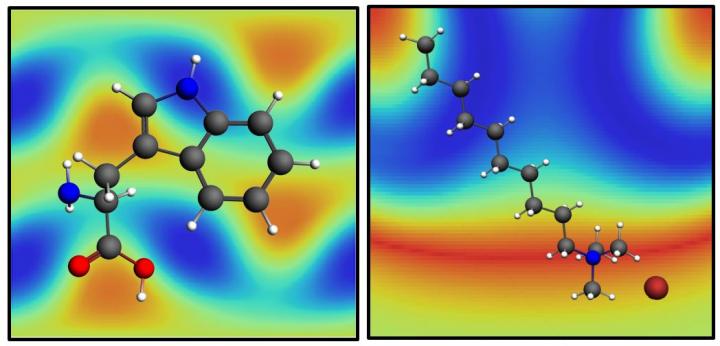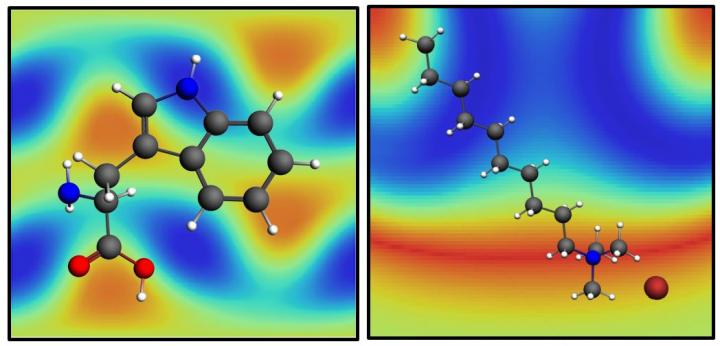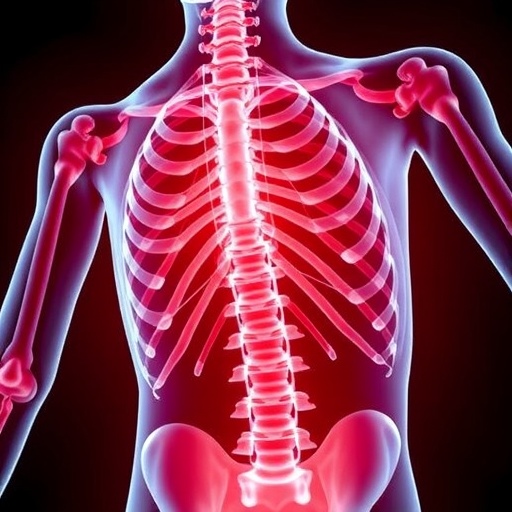
Credit: Hafner Lab/Rice University
HOUSTON – (Feb. 15, 2017) – Five years of hard work and a little "cosmic luck" led Rice University researchers to a new method to obtain structural details on molecules in biomembranes.
The method by the Rice lab of physicist Jason Hafner combines experimental and computational techniques and relies on the plasmonic properties of gold nanoparticles. It takes advantage of the nanoparticles' unique ability to focus light on very small targets.
The researchers call their protocol SABERS, for structural analysis by enhanced Raman scattering, and say it could help scientists who study amyloid interactions implicated in neurodegenerative disease, the neuroprotective actions of fatty acids and the function of chemotherapy agents.
The details appear this month in the American Chemical Society journal Nano Letters.
Their method extracts the location of specific chemical groups within the molecules by locating their characteristic vibrations. When a laser activates plasmons in the nanoparticles, it amplifies vibrationally scattered light from nearby molecules, a phenomenon called surface-enhanced Raman scattering (SERS). The enhancement is sensitive to exactly where the molecule sits relative to the nanoparticle.
"Molecules can vibrate in many different ways, so we have to assign a 'center of vibration' to each one," Hafner said. "If you watch some part of a molecule vibrating, you can visualize where it occurs, but we also had to find a mathematical way to describe it."
SERS spectra are notoriously difficult to untangle, so the full SABERS method also requires unenhanced spectral measurements and theoretical calculations of both the nanorod optics and the molecular properties, he said.
Hafner and his team tested their technique on three structures: surfactant molecules that come with gold nanorods, lipid molecules that form membranes on gold nanorods and tryptophan, an amino acid that settles into the membrane.
"We found that the surfactant layer is tilted by 25 degrees, which is interesting because it explains why other measurements found that the layer appears thinner than expected," Hafner said.
Lipids easily replace surfactants on nanorods since they end in the same chemical structure. By comparing vibrations of that structure in the lipid headgroup to a double bond in the tail, SABERS found the correct orientation and thickness of the lipid bilayer membrane. "It's just cosmic luck that a lipid ends in a perfectly symmetric structure that vibrates and is Raman active and loves to sit on a nanorod," Hafner said.
The researchers also used SABERS to locate tryptophan in the lipid bilayer. "It's very bright, spectroscopically, and easy to see," he said. "In real biological structures, tryptophan is just a small residue attached to a much larger protein. However, tryptophan helps anchor the protein to the membrane, so researchers want to know where it prefers to sit."
Next, Hafner wants to analyze bigger molecules. "In principle, through spectroscopic tricks, we could take this to larger structures, and perhaps even find every residue in a protein to get the whole structure. That's futuristic, but it's where we think we can go with it," he said.
###
Rice alumnus James Matthews, now a software engineer at Schlumberger, is lead author of the paper. Co-authors are Rice undergraduate students Cyna Shirazinejad and Grace Isakson and graduate student Steven Demers. Hafner is a professor of physics and astronomy and of chemistry.
The Robert A. Welch Foundation and Lockheed Martin supported the research.
Read the abstract at http://pubs.acs.org/doi/abs/10.1021/acs.nanolett.6b04509
This news release can be found online at http://news.rice.edu/2017/02/15/good-vibrations-help-reveal-molecular-details/
Follow Rice News and Media Relations via Twitter @RiceUNews
Related materials:
Hafner Lab: http://hafnerlab.blogs.rice.edu
Rice Physics and Astronomy Department: http://www.physics.rice.edu
Wiess School of Natural Sciences: http://natsci.rice.edu
Images for download:
http://news.rice.edu/files/2017/02/0220_RAMAN-1-WEB-1o362ag.jpg
The molecules tryptophan, left, and decyltrimethylammonium bromide, right, over their SABERS maps. SABERS, a new analysis method developed at Rice University, is able to obtain structural details of molecules in lipid membranes near gold nanoparticles without molecular tags. (Credit: Hafner Lab/Rice University)
Located on a 300-acre forested campus in Houston, Rice University is consistently ranked among the nation's top 20 universities by U.S. News & World Report. Rice has highly respected schools of Architecture, Business, Continuing Studies, Engineering, Humanities, Music, Natural Sciences and Social Sciences and is home to the Baker Institute for Public Policy. With 3,910 undergraduates and 2,809 graduate students, Rice's undergraduate student-to-faculty ratio is 6-to-1. Its residential college system builds close-knit communities and lifelong friendships, just one reason why Rice is ranked No. 1 for happiest students and for lots of race/class interaction by the Princeton Review. Rice is also rated as a best value among private universities by Kiplinger's Personal Finance. To read "What they're saying about Rice," go to http://tinyurl.com/RiceUniversityoverview.
Media Contact
David Ruth
713-348-6327
[email protected]
Mike Williams
713-348-6728
[email protected]





